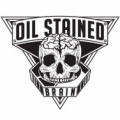Online
Pašreiz MOTOpower skatās 0 viesi un 0 reģistrēti lietotāji.
|
Tēma: Moto degvielas patēriņš
| Autors | Ziņojums |
|---|
| Valkyrie | |  Kopš: 21. May 2009
No: Aknīste
Ziņojumi: 2170
Braucu ar: Valkyrie Interstate
|
14 Feb 2013, 19:10:28 Niere rakstīja:
14 Feb 2013, 17:27:50 Valkyrie rakstīja:
Degvielas patēriņš ir atkarīgs arī no tā, kur atrodas STATOIL's, jo ir baigā nianse vai tā DUS ir Trondheimā, Bergenā vai Oslo. Nu vai arī piem. Preiļos 
kļūdies.
pat tad, kad statoil ilgstoši piegādā degvielu no Mongstadas rūpnīcas, sūdzības par degvielas patēriņu neiet mazumā ne par procentu.
un no šīs rūpnīcas tiek piegādāts ļoti daudz.
Nu muitas dati (CMIS) par baigo degvielas importu no Mongstad galīgi neko neuzrāda. Tad jau laikam tā ir tā slavenā degvielas kontrabanda no lētās NORGE   PKN Orlen Lietuva (ex Mazeikiu Nafta) gan rullē konkrēti. PKN Orlen Lietuva (ex Mazeikiu Nafta) gan rullē konkrēti. 
-----------------
http://www.valkyrieriders.lv
http://www.valkyrieriders.eu
http://www.valkyrieriders.com
|  Offline Offline
| | |
| Negantelis | |  Kopš: 02. Oct 2009
No: Rīga
Ziņojumi: 5341
Braucu ar: Enduro pa tuksnesi
| Niere-kā tu kļuvi tik gudrs?
Vai tev jau ir gara sirma bārda kā Barontēvam?
-----------------
Pieteikties kursiem. |  Offline Offline
| | |
| mexa | |  Kopš: 07. Sep 2012
Ziņojumi: 6888
Braucu ar: VT
| ir starpība no kurienes ņem, pārbaudīts, it īpaši kādu vācu degvielu, viens paziņas čoms pat vadā no DE soļķi un pārdod-pircēji ir tam soļķim par pa dārgāku cenu... ar benžu tas pats. piem manā galā ir ingrīda-tirgo konfiskātu, tobiš viss kopā, to labi brauc, to ēd kā velns uz viena auto, uz 98 nemanās tajā dusā starpības pievedumā...
-----------------
Auto moto elektronikas serviss Krāslavā |  Offline Offline
| | |
|
|
| paraugpilsonis | | Kopš: 19. Jan 2013
No: Rīga
Ziņojumi: 17
Braucu ar: Quattro
| Pagājusī sezona ar GS500e (1990) kombinētā režīmā 5,3 l/100km. Ieskrējienā pārslēdzoties parasti pie 6k apgr. braucot ar +15km/h |  Offline Offline
| | |
| Naits | |  Kopš: 24. Oct 2008
No: Rīga
Ziņojumi: 5221
Braucu ar: TW125,gsxr1100,xjr1300
| Nelasīšu visus palagus, bet mani novērojumi. Ar lukoil benzīnu auto/moto iet labāk un rij mazāk. Bij iespēja dabūt kontrabandas benzīnu( itkā lukoil, bet ne mūsu tirgum) smirdēja drausmīgi, bet viss rūca vēl labāk un rija vēl mazāk. Statoelā pildos tik aiz slinkuma, jo pie mājām. Tur diagnoze ir vienkārša, jo vairāk/asāk tas benzīns ož, jo braucamajs ies labāk un ēdīs mazāk.
Novērojumi nav tikai mani un pajāt uz visādiem papīriem un statistikām 
-----------------
Moto serviss T. 29885941
MOTOLAND
www.motoland.lv
|  Offline Offline
| | |
| MIGs | |  Kopš: 09. Sep 2008
No: Rīga
Ziņojumi: 4307
Braucu ar: KTM SA1290R, Honda 600RR
| Niere - vai visiem benzīniem iekš LV jābūt ar bioetanola piejaukumu, vai tā ir brīva izvēle ?
-----------------
|  Offline Offline
| | |
| Niere | |  Kopš: 08. Dec 2010
Ziņojumi: 8113
Braucu ar:
|
15 Feb 2013, 01:41:15 MIGs rakstīja:
Niere - vai visiem benzīniem iekš LV jābūt ar bioetanola piejaukumu, vai tā ir brīva izvēle ?
95tajam, saskaņā ar likumu, obligāti ar etanolu, dīzelim ar rapša metilesteri (rme).
98tais bez etanola. |  Offline Offline
| | |
| MIGs | |  Kopš: 09. Sep 2008
No: Rīga
Ziņojumi: 4307
Braucu ar: KTM SA1290R, Honda 600RR
| Nu un kādās proporcijās ?
-----------------
|  Offline Offline
| | |
| Niere | |  Kopš: 08. Dec 2010
Ziņojumi: 8113
Braucu ar:
| Nite,
vecozēn, Tu taču esi dzelžu profs. nu nevar tehnikā izmantot šķietamības.
objektīvu degvielas sniegumu var noskaidrot tikai un vienīgi uz stenda.
piemēram:
savulaik rallija vecmeistars Caune ar Ford Focus no Ogres līdz Rīgai, ar to pašu vietējo Statoil degvielu, iekļāvās 3L/100km patēriņā. Bet vai tas ko pierāda par Statoil degvielas īpašībām? nē! tas ir tikai mārketings.
tāpat šeit pat MP galerijā atrodamā tabula pilnīgi neko neizsaka, kā vien to, ka Skandināvijā ir pilnīgi citi braukšanas apstākļi un iespējams pat uzvedība.
09 Jan 2013, 11:08:59 Niere rakstīja:
Tā kā citā diskursā "Moto degvielas patēriņš" parādās tik populārais mīts par "dramatisko degvielas kvalitātes un patēriņa atšķirību" LV un "Eiropā", pārpublicēju informāciju no Chevron:
~~~~~~~~~~~~~~~~~~~~~~~~~~~~~~~~~~~~~
FUEL ECONOMY
Fuel economy in the U.S. is usually expressed as the number of miles traveled on one gallon of gasoline (miles per gallon, or mpg). Many drivers calculate vehicle mpg by counting the miles driven between fill-ups. Outside the U.S., fuel economy is usually expressed as liters per 100 kilometers (L/100 km).
Because controlling influencing factors is difficult and often impossible, driving on the road is not a reliable way to determine how fuel economy is affected by gasoline composition. A more accurate determination is possible under controlled laboratory conditions. A vehicle is mounted on a chassis dynamometer in a temperature-controlled space and driven through a specified operating cycle.
The weight or volume of the gasoline consumed during the cycle may be measured or the fuel economy may be calculated from the weight fraction of carbon compounds in the vehicle’s exhaust.
Figure 1.3 shows that the average fuel economies of two fleets of vehicles are proportional to the heating values of the gasolines tested.4 This is the relationship predicted by combustion theory. In the test, the newer fleet was composed of 1989 model-year cars and the older fleet included 1984–1985 model-year cars. The test involved two different sets of gasolines(Matrix A and Matrix B) that varied in aromatics content, olefins content, oxygen content, oxygenate type, and several other properties (see page 31). Results show that heating values can be used as surrogates for actual fuel economy measurements when considering the effect of gasoline composition on fuel economy.
Conventional fuels always have varied in heating value. One cause is the formulation differences among batches and among refiners. A survey of 1990–1991 conventional gasolines found that the heating value of summer gasolines varied over an 8 percent range.5 Heating value also varies by grade and by season. On average, the heating value of premium-grade gasoline is about 0.7 percent higher than regular grade because premium grade, in general, contains more aromatic hydrocarbons, the class of hydrocarbons with the highest densities. The heating value of winter gasoline is about 1.5 percent lower than summer gasoline because winter gasoline contains more volatile, less dense hydrocarbons. Oxygenated gasolines (see page 53) have lower heating values because the heating values of the oxygenate components are lower than those of the hydrocarbons they displace. The percentage decrease in heating value is close to the mass percent oxygen in the gasoline. For example, in keeping with federal regulations, gasoline in carbon monoxide nonattainment areas in the U.S. is oxygenated to a minimum of 2.7 mass percent oxygen during four or five winter months.6 The heating value of the oxygenated product is about 2.7 mass percent lower than that of conventional gasoline. In addition, federal RFG and California Phase 3 RFG in federal RFG areas are typically oxygenated year-round to an average oxygen content of about 2 mass percent. The resulting heating values are about 2 percent lower than that of conventional gasoline. California Phase 3 RFG also has limits on distillation temperatures and aromatics content, which has the secondary effect of lowering the density of the fuel. These limits reduce heating value by about another 1 percent.
The gasolines that produced the results displayed in Figure 1.3 were specially formulated to span a wide range of compositions. The compositional variations were much greater than those separating conventional and reformulated commercial gasolines. Thus, the results provide solid evidence that RFG does not exert an unusual effect on fuel economy.
Individual drivers have reported decreases of 10 percent, 15 percent, and even 20 percent in fuel economy when they began using RFG. Not surprisingly, many of the claims are anecdotal. Most drivers do not keep continuous fuel-economy records, so they don’t have a meaningful fuel-economy baseline for the gasoline they previously used. Even with a baseline, a fuel-economy value based on the consumption of a single tank of gasoline can be misleading. Drivers interested in fuel economy should average results over several tanks of gasoline or, better yet, over several months of driving.
Heating Value
Heating Value The heating value (also referred to as energy content) of gasoline is its heat of combustion, or the heat released when a known quantity of fuel is burned under specific conditions. In the U.S., heating value is usually expressed as British thermal units (Btus) per pound or per gallon at 60°F. The international metric (SI) units are joules per kilogram (J/kg) or joules per cubic meter (J/m3) at 15°C. For gross heating value, the water produced by the combustion is assumed to be recondensed to a liquid. For the lower net heating value, the water is assumed to remain a gas. All engines exhaust water as a gas, so net heating value is appropriate for comparing different fuels. Because gasoline is sold by volume, it is customary to express gasoline heating values per unit volume, specifically, Btu per gallon (or J/m3). This is the value that correlates with fuel economy because fuel economy is expressed per unit volume (mpg) in the U.S. or volume per distance (L/100 km) in much of the rest of the world. The densities of the hydrocarbons in gasoline vary over a much wider range from their heating values per unit weight. Consequently, compositional changes that result in density changes are accompanied by changes in heating value per unit volume. If the density of a conventional gasoline decreases, its heating value per unit volume also decreases.
Adding oxygenates to conventional gasoline also decreases heating value.
Oxygenates have lower heating values than hydrocarbons on both unit-weight and unit-volume bases. The amount of decrease depends on the amounts and identities of the oxygenates.
Factors Affecting Fuel Economy
Fuel economy is affected by a vehicle’s size, weight, aerodynamics, fuel delivery system, engine design, and transmission type. These factors remain constant for a specific vehicle.
There are, however, many variable factors that influence fuel economy. As mentioned, the heating value of gasoline is one. Weather conditions, air conditioner use, road conditions, the route driven, traffic, driving speed, and driving style are others. Fuel economy is also affected by the mechanical condition of the car, including the engine tune, wheel alignment, and tire pressure. Some of these non gasoline factors have the potential to cause substantial changes in fuel economy. Table 1.4 lists average and maximum effects published by the U.S. Environmental Protection Agency (EPA).
Carbonaceous engine deposits can build up over time and degrade fuel economy and other performance attributes, but these problems can be reduced with the use of deposit control additives. This subject is discussed in detail in Chapter 6, “Gasoline Vehicles – Deposit Control.”
Winter-related factors can combine to lower fuel economy up to 20 percent compared to summer factors. These include rain or snow on the road, which increases tire resistance.
In addition, for safety a driver may need to slow down to a less fuel-efficient speed. In cold weather, a richer air-fuel mixture is required to start and warm up an engine. Much of the warm-up is done at idle because of the need to defog or defrost windows. Also, in many vehicles, the air conditioner is operated to assist defogging. More energy is required to overcome the resistance created by the higher viscosities of cold lubricants, including engine oil, transmission fluid, and differential lubricant.
Short trips are worse for fuel economy than long trips because a cold engine uses more fuel than a warm engine and requires more energy to overcome the resistance of cold lubricants. Traffic jams and bumper-to-bumper driving exact a heavy toll on fuel economy.
Fuel Economy Road Test
The results of a Wisconsin on-road fuel economy test demonstrate that some of the above factors can have a much bigger effect on fuel economy than a small percentage change in gasoline heating value.

The test was designed to minimize all factors affecting fuel economy except gasoline composition. Fueled with various gasolines, vehicles were driven over the same route of 100 miles (161 kilometers) of urban and suburban roads. The fuel economy of each vehicle was measured four times for each gasoline: once in the morning and afternoon of the same day and again in the morning and afternoon of one day a week later. In some cases, a vehicle was driven by the same driver both days. Other vehicles were driven by more than one driver. When the results for the two weeks were compared, most of the fuel economies in the second week were lower. The differences were greater than 10 percent for a quarter of the car-fuel combinations. Two factors that probably contributed to the week-to-week differences were driver changes and a weather change.
Ambient temperatures were lower in the second week; on some days, noontime temperatures were as much as 17°C (30°F) cooler than the average noontime temperature of the preceding week.
The gasolines used in the Wisconsin test were commercial gasolines, either a conventional gasoline or a federal RFG oxygenated with methyl tertiary butyl ether (MTBE), ethyl tertiary butyl ether (ETBE), or ethanol (EtOH). When the results for all the road tests of all the vehicles were combined, the average fuel economy of the three oxygenated federal RFGs was 2.8 percent lower than the average fuel economy of the conventional gasoline. This value was much less than the 10 percent week-to-week difference for some of the car-fuel combinations but within the range predicted by the differences in the gasolines’ heating values.
OTHER PERFORMANCE FACTORS
Many gasolines available around the world contain oxygenates. In engines without closed-loop feedback systems, oxygenated gasoline leans the air-fuel mixture. Fuel leaning can cause some degradation in driveability, depending on an engine’s calibration.
Without fuel additives, deposits form throughout an engine’s intake system, including in the fuel injectors, carburetor, intake manifold, and intake ports and on the intake valves. Deposits can be very deleterious to engine performance, degrading driveability, decreasing power and fuel economy, and increasing emissions.
Today, we commonly discuss gasoline or gasoline powered vehicles and their impact on air quality. A number of metropolitan areas in the U.S. fail to meet one or more federal air quality standards. In some of these areas, on-road vehicles are responsible for more than half of the emissions that either primarily or secondarily cause violations of air quality standards.
Other major metropolitan areas throughout the world also are experiencing serious air pollution problems.
This chapter explains who regulates emissions and how and why they do it. It also explains which emissions come from vehicles and how those emissions are formed. Finally, it explains how emissions are affected by gasoline characteristics and how gasoline is being reformulated to help reduce emissions.
The explanations are complicated because they involve complex regulations and complex science. As a consequence, keeping this review short and simple is challenging. The numerous acronyms and abbreviations are unavoidable; both government regulation and science use them heavily.
ja nu kas: http://translate.google.com/
|  Offline Offline
| | |
| Niere | |  Kopš: 08. Dec 2010
Ziņojumi: 8113
Braucu ar:
|
15 Feb 2013, 11:35:04 MIGs rakstīja:
Nu un kādās proporcijās ?
likums nosaka 5%. iespējams nākotnē būs visi 10%.
te saturīgs matērijs par biodegvielām.
skaties, sākot no 38tās lpp.[ Šo ziņu laboja Niere, 15 Feb 2013, 13:27:34 ] |  Offline Offline
| | |
| Niere | |  Kopš: 08. Dec 2010
Ziņojumi: 8113
Braucu ar:
|
14 Feb 2013, 21:14:40 mexa rakstīja:
ir starpība no kurienes ņem, pārbaudīts, it īpaši kādu vācu degvielu, viens paziņas čoms pat vadā no DE soļķi un pārdod-pircēji ir tam soļķim par pa dārgāku cenu... ar benžu tas pats. piem manā galā ir ingrīda-tirgo konfiskātu, tobiš viss kopā, to labi brauc, to ēd kā velns uz viena auto, uz 98 nemanās tajā dusā starpības pievedumā...
pārbaudīts? kā pārbaudīts? |  Offline Offline
| | |
| mexa | |  Kopš: 07. Sep 2012
Ziņojumi: 6888
Braucu ar: VT
| studiju laikā nobraukti vismaz 40KKm ar vienu autosu(calibra 8v)mērot pēc dusu pumpjiem un kannām patēriņš bija mazāks uz Lukoil benžas, statoil drusku lielāks. uz izjūtam starpība ir manāma, es neesmu ar auto uz jūs, tā kā jūtu arī kas pa kam. zināmi cilvēki kas sporta autosos lej tikai no lukoila 98o, vai tik tā krokodila šoferis nebija h1tman  . draugu izvērtējums arī krita par labu uz lukoilu. no russijas man vadā gan staoilu gan lukoilu, tur tā starpība teju nav manāma. un vispār no rus benžas esmu sajūsmā, itkā lamā vietējie, bet man autoss uz ru 92 skrien labāk nekā LV labs 95, biju šokā kad pirmoreiz ielēja. latvijas statiks man nepatīk un ar papīriem to neizskaust. igaunijā un tālāk somijā itkā bija labāks, bet tur es tik garām braucu . draugu izvērtējums arī krita par labu uz lukoilu. no russijas man vadā gan staoilu gan lukoilu, tur tā starpība teju nav manāma. un vispār no rus benžas esmu sajūsmā, itkā lamā vietējie, bet man autoss uz ru 92 skrien labāk nekā LV labs 95, biju šokā kad pirmoreiz ielēja. latvijas statiks man nepatīk un ar papīriem to neizskaust. igaunijā un tālāk somijā itkā bija labāks, bet tur es tik garām braucu
-----------------
Auto moto elektronikas serviss Krāslavā |  Offline Offline
| | |
| Niere | |  Kopš: 08. Dec 2010
Ziņojumi: 8113
Braucu ar:
|
15 Feb 2013, 13:44:35 mexa rakstīja:
studiju laikā nobraukti vismaz 40KKm ar vienu autosu(calibra 8v)mērot pēc dusu pumpjiem un kannām patēriņš bija mazāks uz Lukoil benžas, statoil drusku lielāks. uz izjūtam starpība ir manāma, es neesmu ar auto uz jūs, tā kā jūtu arī kas pa kam. zināmi cilvēki kas sporta autosos lej tikai no lukoila 98o, vai tik tā krokodila šoferis nebija h1tman  . draugu izvērtējums arī krita par labu uz lukoilu. no russijas man vadā gan staoilu gan lukoilu, tur tā starpība teju nav manāma. un vispār no rus benžas esmu sajūsmā, itkā lamā vietējie, bet man autoss uz ru 92 skrien labāk nekā LV labs 95, biju šokā kad pirmoreiz ielēja. latvijas statiks man nepatīk un ar papīriem to neizskaust. igaunijā un tālāk somijā itkā bija labāks, bet tur es tik garām braucu . draugu izvērtējums arī krita par labu uz lukoilu. no russijas man vadā gan staoilu gan lukoilu, tur tā starpība teju nav manāma. un vispār no rus benžas esmu sajūsmā, itkā lamā vietējie, bet man autoss uz ru 92 skrien labāk nekā LV labs 95, biju šokā kad pirmoreiz ielēja. latvijas statiks man nepatīk un ar papīriem to neizskaust. igaunijā un tālāk somijā itkā bija labāks, bet tur es tik garām braucu
vecīt, izlasi vēlreiz, ko uzrakstīji, un padomā, cik tehnisks ir Tavs pastāsts, kas reducējas un emocijām.
frāzes:
"..uz izjūtam starpība ir manāma.."
"..es neesmu ar auto uz jūs, tā kā jūtu arī kas pa kam.."
"..draugu izvērtējums arī krita par labu.."
"..starpība teju nav manāma.."
"..un vispār no rus benžas esmu sajūsmā.."
"..itkā lamā vietējie.."
"..man autoss uz ru 92 skrien labāk nekā LV labs 95.."
"..biju šokā kad pirmoreiz ielēja.."
"..igaunijā un tālāk somijā itkā bija labāks, bet tur es tik garām braucu.."
"..statiks man nepatīk un ar papīriem to neizskaust.."
pēdējā frāze arī izsaka visu. es te neiestājos par kādu konkrētu tirgotāju vai ražotāju. taču, ja reiz runājām par tehniskām kategorijām, labāk tomēr pieturēties pie attiecīgas terminoloģijas un skaitļiem.
emocijas(attieksme prat zīmoliem) šeit ir pilnīgi nevietā un rada tikai apjukumu un/vai nepamatotas dusmas foruma lasītājiem bez priekšzināšanām, kas meklē citu viedokli, lai veidotu savu.[ Šo ziņu laboja Niere, 15 Feb 2013, 14:03:14 ] |  Offline Offline
| | |
| h1tman | |  Kopš: 13. Nov 2009
No: Rīga
Ziņojumi: 1209
Braucu ar: VTR
| nju es krokodilam tikai leeju lukoil 98... un vispaar Gaaze tocna lukoil ir labaaka... Bet nju tas jau kaa kuram, mopedaa leju kreivijas 98 un nav nekaadu probleemu par cik pats regulaari vizinos rus-lv prieksh sevis savedu pietiekami 
-----------------
|  Offline Offline
| | |
| EGLE | |  Kopš: 09. Jul 2008
No: Alūksne
Ziņojumi: 48
Braucu ar: zx636c
| nu ta spečuki, jautajums cik vajadzētu ēst Z750
04-06 nu atkarībā arī kā brauc, bet nu ja sanāk 17-18 gāzīti turēt, un arī vairāk,man sanāk ka 18 litri uz kkadiem 260-270km, vidēji 6.6 - 7 litri uz simta ir tas oki? infu pagaidām neredzēju tādēļ arī jautāju!
P.S. gāzīti turēt visu laiku nevis uzdot un noņemt!
-----------------
Runā blondīnes:
- Es sev ausī vēl vienu caurumu izdūru!
- Un kā? Vai tagad dzirdi labāk? |  Offline Offline
| | |
| Niere | |  Kopš: 08. Dec 2010
Ziņojumi: 8113
Braucu ar:
| pirmajā lapā šajā pašā diskursā viss atrodams.
jā, Tavs degvielas patēriņš ir normā. |  Offline Offline
| | |
| EGLE | |  Kopš: 09. Jul 2008
No: Alūksne
Ziņojumi: 48
Braucu ar: zx636c
|
23 Jun 2013, 01:50:06 Niere rakstīja:
pirmajā lapā šajā pašā diskursā viss atrodams.
jā, Tavs degvielas patēriņš ir normā.
Sorry Sorry! (Aklajam pietiek pataustit vienreiz  ) )
KAWASAKI Z 750 (04-06) * 6.83 L / 100 km
un ja pagāzē tad arī rodas sausums bakā tik Atri  ! !
TNX
-----------------
Runā blondīnes:
- Es sev ausī vēl vienu caurumu izdūru!
- Un kā? Vai tagad dzirdi labāk? |  Offline Offline
| | |
| tuchka | | Kopš: 08. May 2011
No: Liepāja
Ziņojumi: 926
Braucu ar: visu kas rūc un nerūc
| Katram savs, tā vienmēr ir bijis
Vizinos ar FJR.. pirms statoila patēriņš bij 5,5-6l/100. Nu jau trīs mēnešus leju tikai statoil, jauda nav zudusi, patēriņš 4,5 - 4,8l/100 kopējā ciklā  Gāzēju, brīžiem kārtīgi atvelku un arī ar sotaku mierīgi braucu, tad atkal pieleju bāku un .... ????? Gāzēju, brīžiem kārtīgi atvelku un arī ar sotaku mierīgi braucu, tad atkal pieleju bāku un .... ?????    neticami mazs patēriņš neticami mazs patēriņš 
-----------------
|  Offline Offline
| | |
| maniac | |  Kopš: 23. Jul 2009
No: Salaspils
Ziņojumi: 5099
Braucu ar: GL1800, Versys650 sidecar
|
23 Jun 2013, 08:42:15 tuchka rakstīja:
Katram savs, tā vienmēr ir bijis
Vizinos ar FJR.. pirms statoila patēriņš bij 5,5-6l/100. Nu jau trīs mēnešus leju tikai statoil, jauda nav zudusi, patēriņš 4,5 - 4,8l/100 kopējā ciklā  Gāzēju, brīžiem kārtīgi atvelku un arī ar sotaku mierīgi braucu, tad atkal pieleju bāku un .... ????? Gāzēju, brīžiem kārtīgi atvelku un arī ar sotaku mierīgi braucu, tad atkal pieleju bāku un .... ?????    neticami mazs patēriņš neticami mazs patēriņš 
Arī FJR. Arī pārsvarā Statoil. Bet mazāk par 6 l/100km nav bijis. Ja divatā, ar 3 koferiem, bākas somu, 150-180 km/h - 7,5 l/100km.
Laikam "gāzēju" vairāk... 
-----------------
|  Offline Offline
| | |
| RU | |  Kopš: 27. Sep 2009
Ziņojumi: 1078
Braucu ar: z750
|
23 Jun 2013, 01:54:52 EGLE rakstīja:
23 Jun 2013, 01:50:06 Niere rakstīja:
pirmajā lapā šajā pašā diskursā viss atrodams.
jā, Tavs degvielas patēriņš ir normā.
Sorry Sorry! (Aklajam pietiek pataustit vienreiz  ) )
KAWASAKI Z 750 (04-06) * 6.83 L / 100 km
un ja pagāzē tad arī rodas sausums bakā tik Atri  ! !
TNX
manējam z750 5,8-6,2 litri. Braucu galvenokārt pa šoseju, nedaudz pilsēta. Ārpus pilsētas ātrums 130-140 km/h |  Offline Offline
| | |
|
|